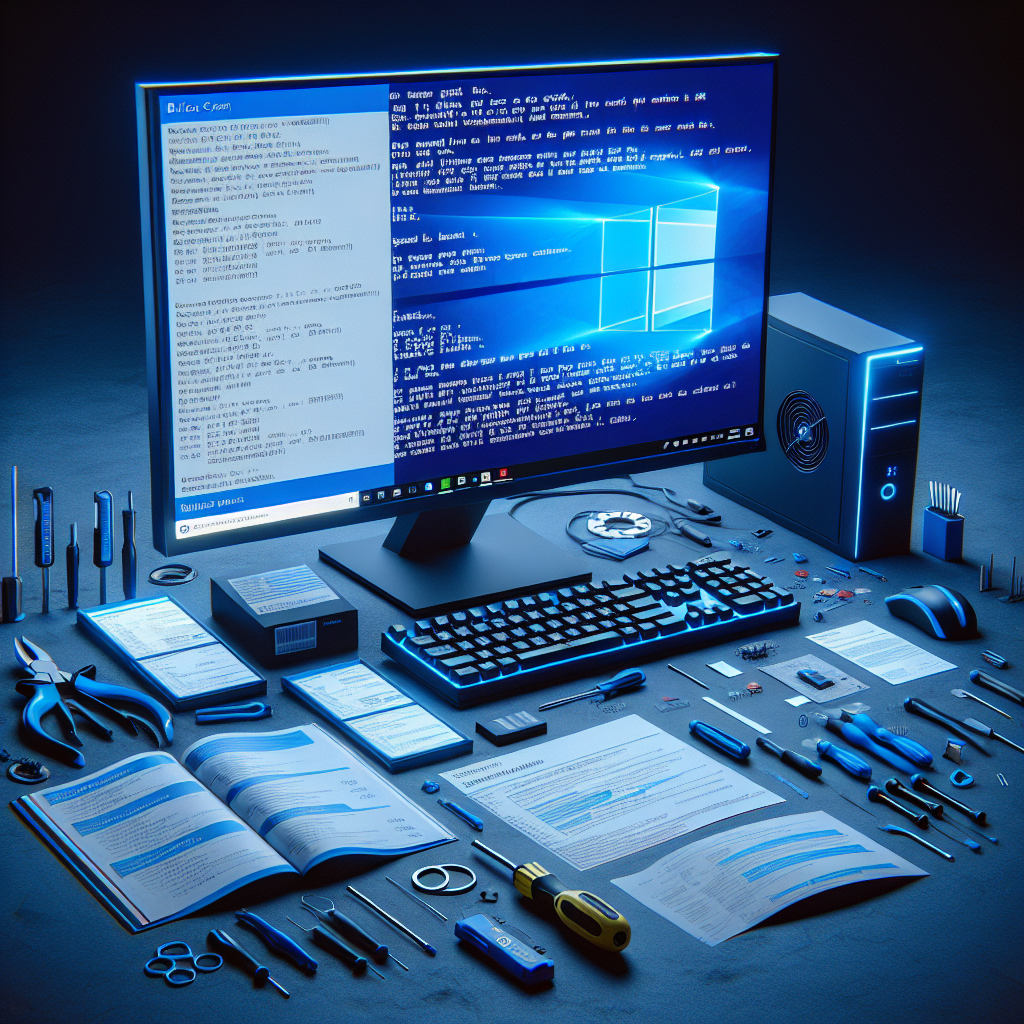
How to fix blue screen windows 10
Understanding the Blue Screen of Death (BSOD) in Windows 10
The "Blue Screen of Death" (BSOD) is one of the most dreaded issues faced by Windows users, particularly for those using Windows 10. This error indicates that the operating system has encountered a critical problem it cannot recover from without restarting. The reasons can vary widely, from hardware malfunctions to software incompatibilities. In this article, we will explore what causes the blue screen, how to prevent it, and ultimately how to fix blue screen errors in Windows 10.
Common Causes of BSOD
Understanding the potential causes of BSOD is the first step in addressing the issue. Here are some common culprits:
- Driver Issues: Incompatible or outdated drivers can lead to conflicts that trigger BSOD.
- Hardware Problems: Faulty RAM, hard drives, or overheating components can cause system instability.
- Software Conflicts: Recent software installations or updates can interfere with system operations.
- Malware: Infections can corrupt system files, leading to frequent crashes.
- Corrupted System Files: Damaged files can affect essential system operations, resulting in a blue screen.
Initial Troubleshooting Steps
Before diving into complex solutions, there are several initial steps you can take to diagnose and potentially resolve the issue.
1. Note the Error Code
When a blue screen appears, Windows often displays an error code. Make a note of this code, as it can provide insight into the underlying issue. Common error codes include:
- 0x0000007B - Inaccessible Boot Device
- 0x000000EF - Critical Process Died
- 0x0000001E - KMODE Exception Not Handled
2. Restart Your Computer
Sometimes the simplest solution is to restart your PC. This can clear temporary glitches. If the blue screen persists, it’s time to move on to more involved methods.
Comprehensive Fixes for BSOD Issues
If you find yourself repeatedly seeing blue screens, follow the detailed troubleshooting methods outlined below. These solutions will guide you step-by-step on how to fix blue screen issues on Windows 10.
1. Update Device Drivers
Outdated or faulty drivers are one of the leading causes of BSOD. Follow these steps to update your drivers:
- Press Windows Key + X and select Device Manager.
- Expand the categories and right-click on the device you want to update.
- Select Update driver.
- Choose the option to Search automatically for updated driver software.
Alternatively, you can visit the manufacturer’s website to download the latest drivers directly.
2. Run Windows Memory Diagnostic Tool
Faulty RAM can lead to BSOD. To test your memory:
- Type Windows Memory Diagnostic in the Start menu search bar and select it.
- Choose Restart now and check for problems.
- After the test is complete, Windows will restart and display the results.
3. Check for Windows Updates
Keeping your Windows updated can resolve known bugs that may lead to BSOD:
- Go to Settings > Update & Security.
- Select Windows Update and click on Check for updates.
- If updates are available, install them and restart your computer.
4. Run the System File Checker (SFC)
The System File Checker tool checks for corrupted system files and repairs them:
- Open Command Prompt as an administrator by searching for cmd, right-clicking, and selecting Run as administrator.
- Type sfc /scannow and hit Enter.
- Allow the scan to complete, which may take some time.
5. Perform a Clean Boot
Booting in a clean state can help identify if a background program is causing BSOD:
- Type msconfig in the search bar and select System Configuration.
- Under the General tab, choose Selective startup and uncheck Load startup items.
- Go to the Services tab, check Hide all Microsoft services, and click on Disable all.
- Restart your computer.
If the BSOD stops, gradually enable services to find the culprit.
6. Check for Malware
Malicious software can corrupt files and lead to BSOD. Use Windows Defender or another reputable antivirus to scan your system.
- Open Windows Security from the Start menu.
- Select Virus & threat protection.
- Click on Quick scan or Full scan for a more in-depth check.
7. Restore or Reset Your PC
If all else fails, consider restoring your PC to an earlier point or performing a reset:
- System Restore: This returns your system settings to an earlier date, which can resolve BSOD issues caused by recent changes.
- Reset This PC: This option reinstalls Windows while keeping your files or removes everything for a fresh start.
Access these options through Settings > Update & Security > Recovery.
Preventing Future BSODs
After fixing your blue screen issues, consider these preventive measures:
- Regularly update your drivers and Windows.
- Conduct routine hardware checks for any signs of malfunction.
- Install a good antivirus program and keep it updated.
- Avoid installing unverified software that could cause conflicts.
- Regularly back up your data to avoid losses caused by crashes.
Final Thoughts
Encountering a blue screen error in Windows 10 can be alarming, but knowing how to fix blue screen windows 10 will empower you to resolve these issues effectively. Always take note of error codes and follow these troubleshooting steps methodically. Remember to maintain regular software and hardware upkeep to prevent future occurrences. By adhering to the suggestions outlined in this article, you can significantly reduce your chances of facing BSOD again.
"An ounce of prevention is worth a pound of cure." - Benjamin Franklin
Embrace these practices as part of your regular computer maintenance routine to ensure a smooth, uninterrupted experience on your Windows 10 system.
By Guest, Published on October 6th, 2024